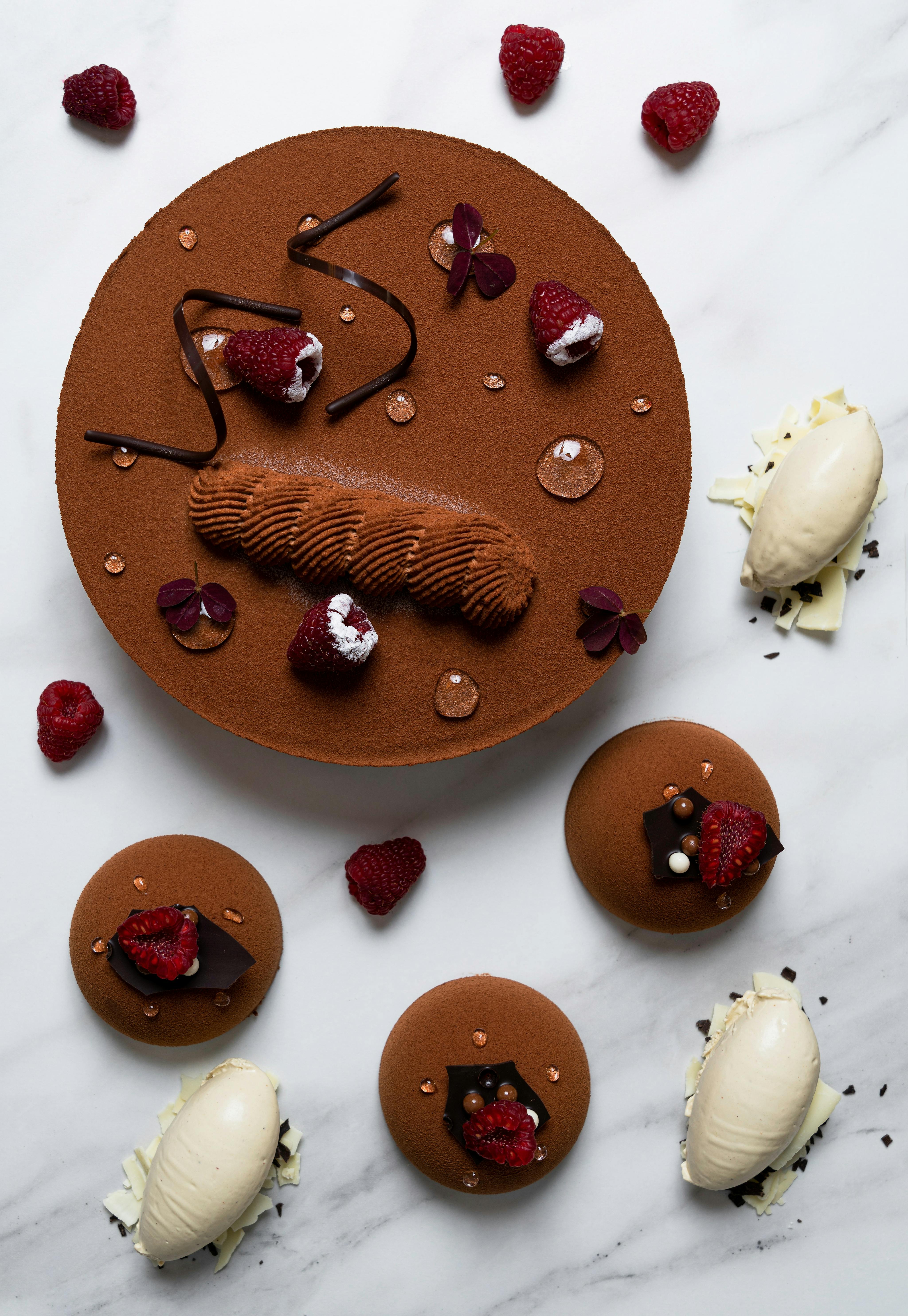The Inside Scoop with Sweden's Ice Cream Pioneer
Award-winning pastry chef Tony Olsson on his favourite cake and how he introduced Italian-style ice cream to Sweden.
Words by Sophie Miskiw. Photography by Johan Ståhlberg.
“I’m quite basic in my thinking about pastry,” says star pastry chef Tony Olsson. “What’s important is that something happens when you take a bite. There need to be the right components - something sweet and sour, some fat and some crunch.”
What Tony calls basic, others would probably call knowledgeable. He’s been in the business of baking and desserts for over 30 years, has competed multiple times with Sweden’s national pastry team (and served as its captain), and won a string of gold medals. That’s not to mention the years he has spent consulting for Kåkå, Sweden’s leading supplier of baking ingredients to the industry.
It was during a marketing meeting at Kåkå in the mid-00s that Tony first suggested artisanal ice cream would be the next big thing in Sweden. Eight months later the director sent him on a reconnaissance mission to Italy where he was instructed to learn all things gelato. What he discovered was that the ingredients the Italians used were different to the ingredients the Swedes were working with. It totally changed the way he made ice cream and, as a result, the way the entire country did too
“There’s a lot of counting with the recipe, with sugar and fat. Before I only used cream, milk, egg yolk, sugar, glucose syrup, and the flavouring. But they were using dry glucose, milk, sugar, and no eggs. A whole new world was opened up to me! When I started this ice cream in Sweden everyone was asking if it was powder ice cream. I told them it wasn’t, this was how they make ice cream everywhere in the world except in Sweden. Today, that’s how it’s done here.”
Unsurprisingly ice cream has become a product close to Tony’s heart, so much so that he started up the instantly-successful ice cream championships in Sweden. And so it was no surprise that when asked to create a dessert for us, Tony chose ice cream as an accoutrement to his chocolate and raspberry gateau.
“This dessert has four components. Chocolate, vanilla, raspberry, and pistachio. We took some extra pistachio to include some ice cream with the cake. I’m trying to show that you can go to a pastry shop and buy a dessert. You have the gateau and you serve ice cream alongside it. You could put some raspberry compote on the plate and have a complete dessert.”
The cake itself is a bestseller at Thelins, the iconic Swedish patisserie where Tony is currently the creative director. It’s been on the menu for three years, he says, and is still as popular as ever. It has everything Tony believes a good cake needs without becoming too complicated or ingredient-heavy.
“It’s my favourite cake. It has three ingredients: chocolate and vanilla, then some raspberry for acidity and freshness. For me, it’s a really simple cake but something happens when you take a bite. You get all the components you need: creamy, crunchy, sweetness, and acidity.”
Tony points out that while he often uses vanilla, it’s never the focal point of a dessert. It’s a component that lifts the rest of the ingredients and helps achieve the right consistency. That’s precisely its role in this particular gateau. He prizes its simplicity but above all that it provides the customer with an experience -- this is no standard cake, he says, and nor should any cake be if someone has parted with money for it.
“You get something you don’t expect. And when you make these smaller petits gâteaux, everything is hidden inside. You don’t know what’s going to happen. It’s important for me that when the customer cuts open the cake, that it will be a surprise.”
“It’s my favourite cake. It has three ingredients: chocolate and vanilla, then some raspberry for acidity and freshness. For me, it’s a really simple cake but something happens when you take a bite. You get all the components you need: creamy, crunchy, sweetness, and acidity.”
Words by Sophie Miskiw. Photography by Johan Ståhlberg.
